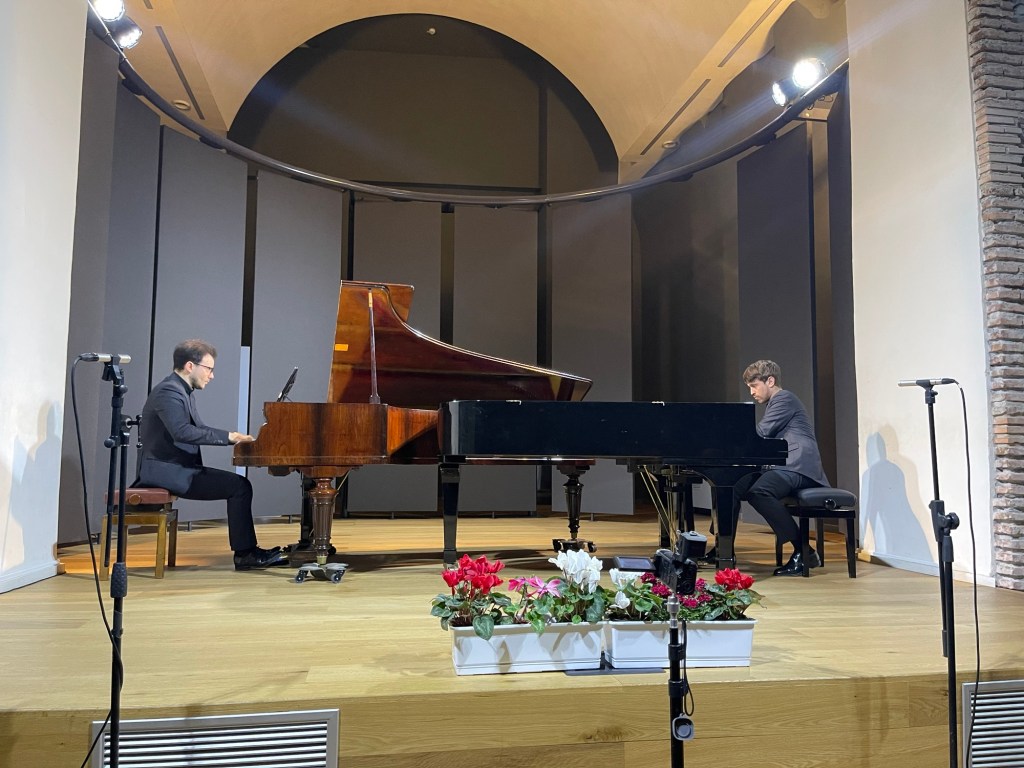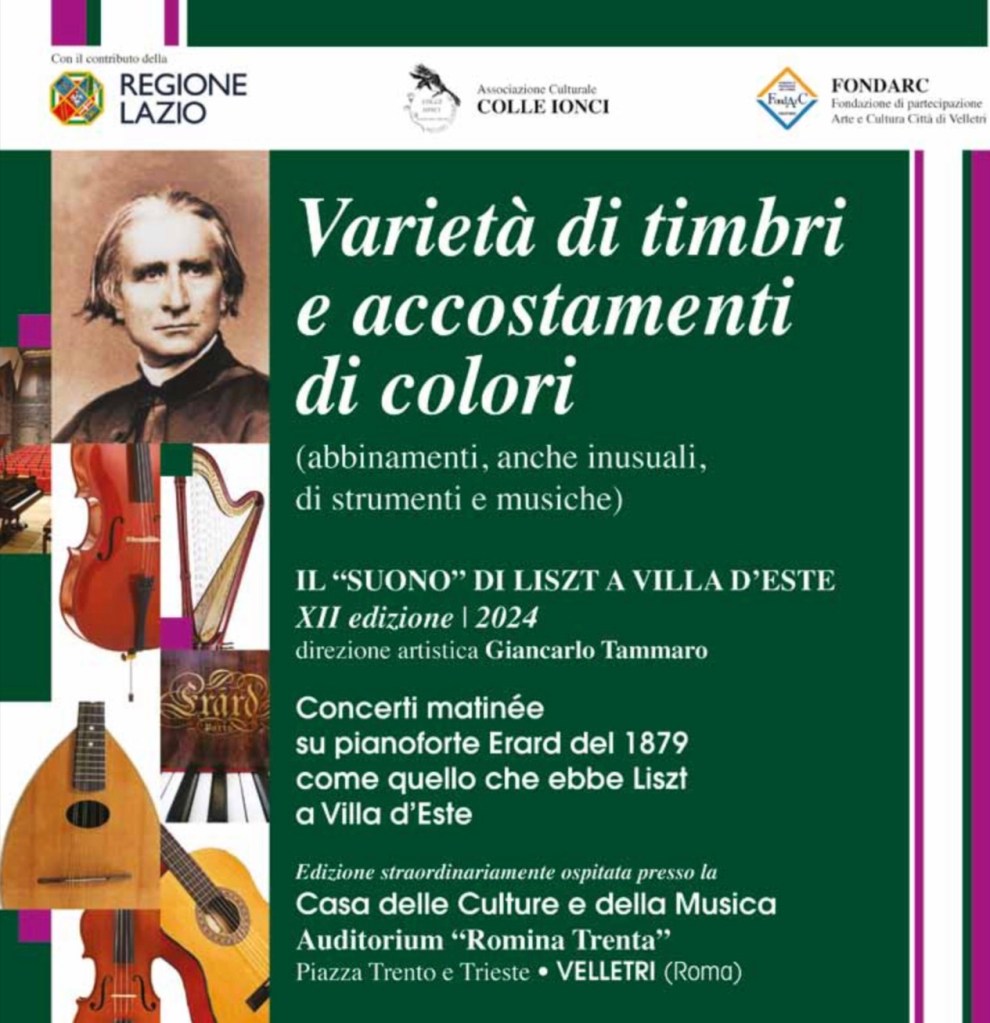
Two superb young pianists Jacopo Feresin and Francesco Grano in a duel much as Liszt and Thalberg were to do in Princess Belgioso’s salon in Paris.’Thalberg is the greatest pianist of all but Liszt is unique’.

And so we were reminded of them today in Velletri in the very hills where Liszt would have travelled on his Années de Pélerinage with the Countess d’Agoult.

Marie Cathérine Sophie, Comtesse d’Agoult (born de Flavigny; 31 December 1805 – 5 March 1876), was a French author and historian, known also by her pen name, Daniel Stern.
She entered into an early marriage of convenience with Charles Louis Constant d’Agoult, Comte d’Agoult (1790–1875) on 16 May 1827, thereby becoming the Comtesse d’Agoult. They had two daughters, Louise (1828–1834) and Claire (1830–1912). Marie never divorced the count, even though she had left him for Franz Liszt with whom she had three children. She and Liszt did not marry, maintaining their independent views and other differences while Liszt was busy composing and touring throughout Europe.
From summer 1837 until autumn 1839 they travelled to Italy and Switzerland
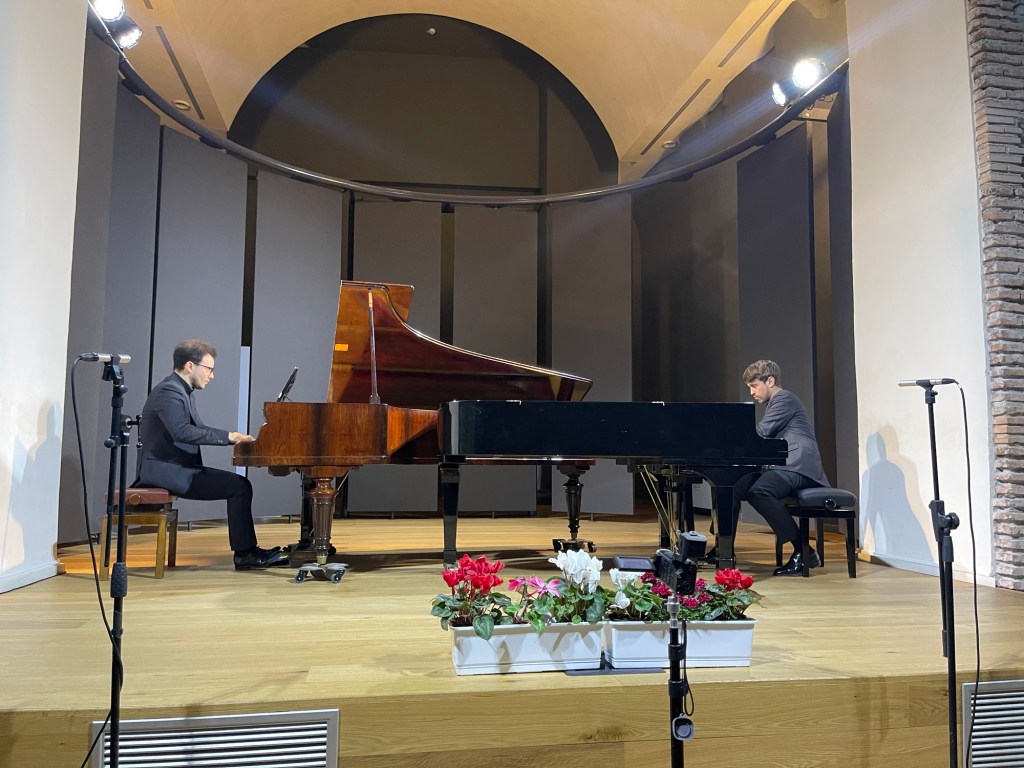
Here we were treated to a duel between two young musicians taking turns to be soloist and then orchestra and finally united both at the same instrument on the Erard.
Jacopo played on an 1879 Erard similar to the ones that Liszt preferred and Francesco played a 1998 Pleyel,the preferred make of Chopin.
Both demonstrated their mastery,musicianship and intelligence with concertos by Beethoven and Rachmaninov and a peace making duet by Grieg after being feted equally for their artistry and passionate commitment.

I was very interested to see how Jacopo would open the Beethoven and how he would play the chords in the slow movement .Also how he would approach the embellishments in the development of the first movement when Beethoven due to the limitations of the Erard piano at the time was forced to take another path! Jacopo is a very intelligent and highly prepared young musician and although he spread the opening and the chords in the slow movement it was done so discreetly and with the style that the instrument of 1879 would understand.
I had heard Jacopo playing the Beethoven concerto for Roma 3 University : https://christopheraxworthymusiccommentary.com/2021/07/15/summer-harmonies-at-teatro-palladium-for-roma-tre-orchestra/
Modern instruments and the later Erard have more notes than those of Beethoven’s day but I think Jacopo allowed Beethoven the last word there. His playing was very expressive with dynamic drive and poetry nowhere more than in Beethoven’s cadenza where his poetic ending was perfectly in tune with Francesco’s orchestra and was really an expression of great artistry from them both.The grandiose Furies of the Andante were replied to by the beseeching questioning of Orpheus, in a dialogue between the two pianist that was poignantly moving for the differing timbres of the two instruments.Nowhere was their superb musicianship more evident than in the Rondò where their superb duo playing was of extraordinary vitality and character.It was interesting to note how Jacopo managed the long pedals that Beethoven indicates but also note some rather strange embellishments that he added to Beethoven’s much simpler efforts !
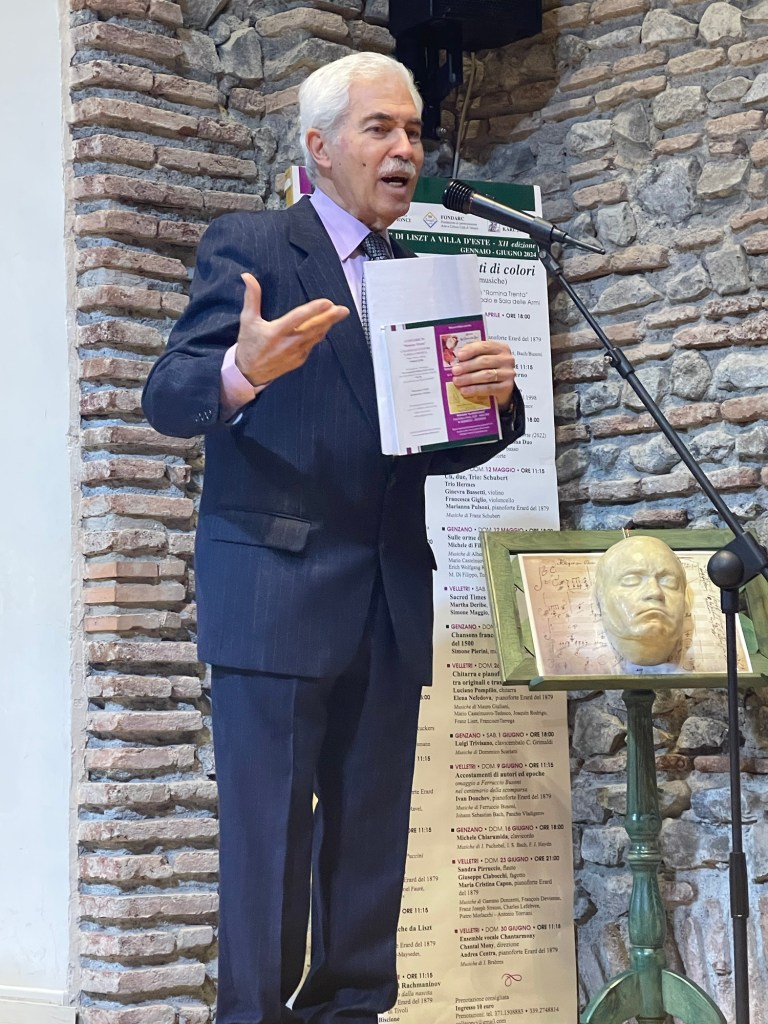
After a short break in which the artistic director outlined many of the things about the concertos that are described so fully in his catalogue that year after year he produces with tireless passion and scholarship.It was interesting to note the link between Beethoven and Rachmaninov which I am sure Brendel and Schiff must have overlooked! Czerny was Beethoven’s pupil and he was also the teacher of Franz Liszt (he took him as a child to play to Beethoven who famously gave him a kiss of approval.) Siloti was a pupil of Liszt and he was the teacher of Rachmaninov! So the combination of Beethoven with Rachmaninov makes perfect sense.
This series now in its 12th edition has finally been recognised by the Regione Lazio which subsidises a series of 25 concerts within its bounderies.
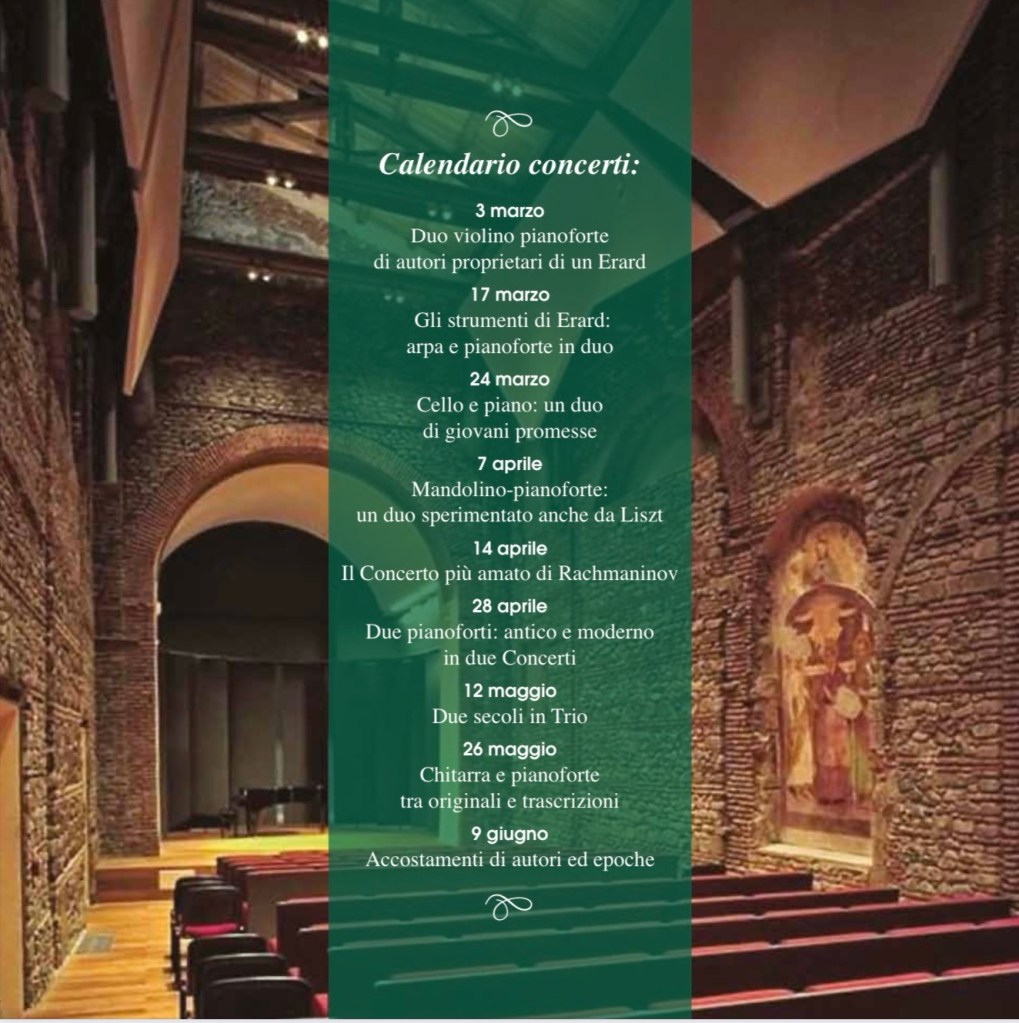
I had heard Francesco Grano in Mozart K 456 for Roma 3 University :https://christopheraxworthymusiccommentary.com/2021/02/09/roma-3-orchestra-the-mozart-project/
The Rachmaninov unleashed a youthful spirit in both players who proceeded to give exhilarating performances of subtle beauty and breathtaking athleticism in a display of real duo playing .Beethoven had more obviously been for a soloist and a reduction of orchestra for piano.In the Rachmaninov they were equal partners and it seemed like a work written for two virtuoso pianists.

Francesco playing without the score gave a breathtaking account of the solo part from the opening cascade of octaves to the heart rending melancholy of Rachmaninov’s mellifluous outpourings.A cadenza of nobility and sumptuous richness and sense of improvisation before the startling virtuosity of the ending.A slow movement of haunting poignancy and an ‘Allegro vivace’ that just raced from their fingertips with extraordinary brilliance and contrasted with the beauty of the central episode where the gossamer lightness of Francesco’s embellishments were streams of golden sounds entering and exiting a world of unexpected dreams.
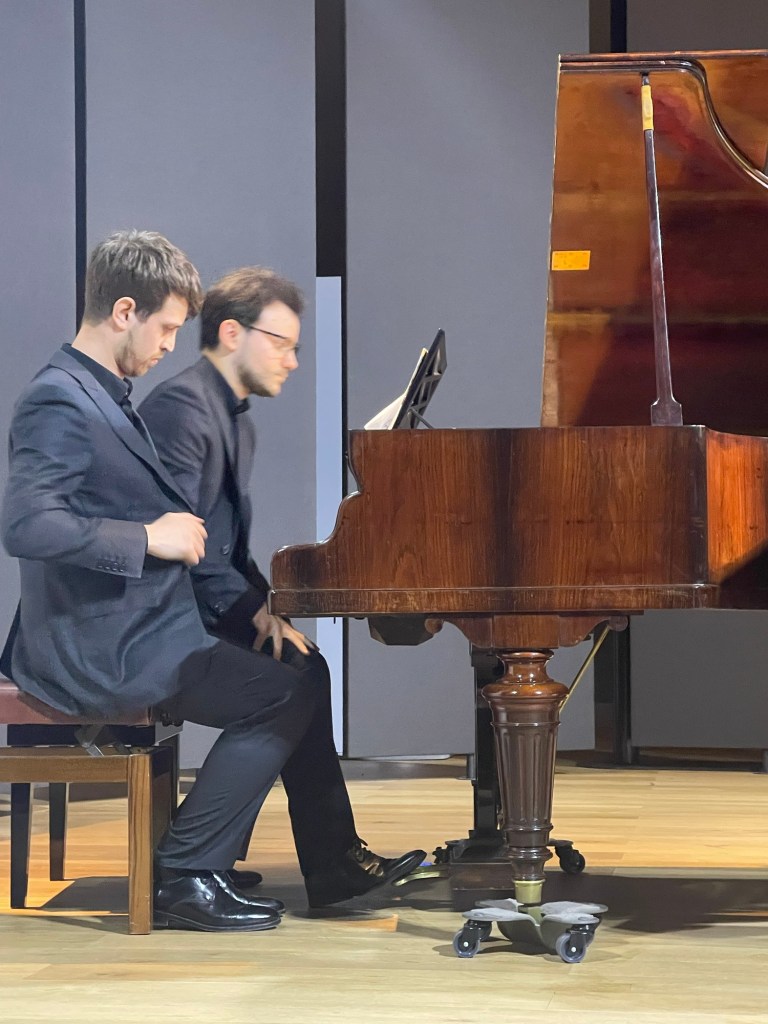
An encore saw them both united at the Erard piano in a performance of ‘Morning’ from Grieg’s Peer Gynt Suite.
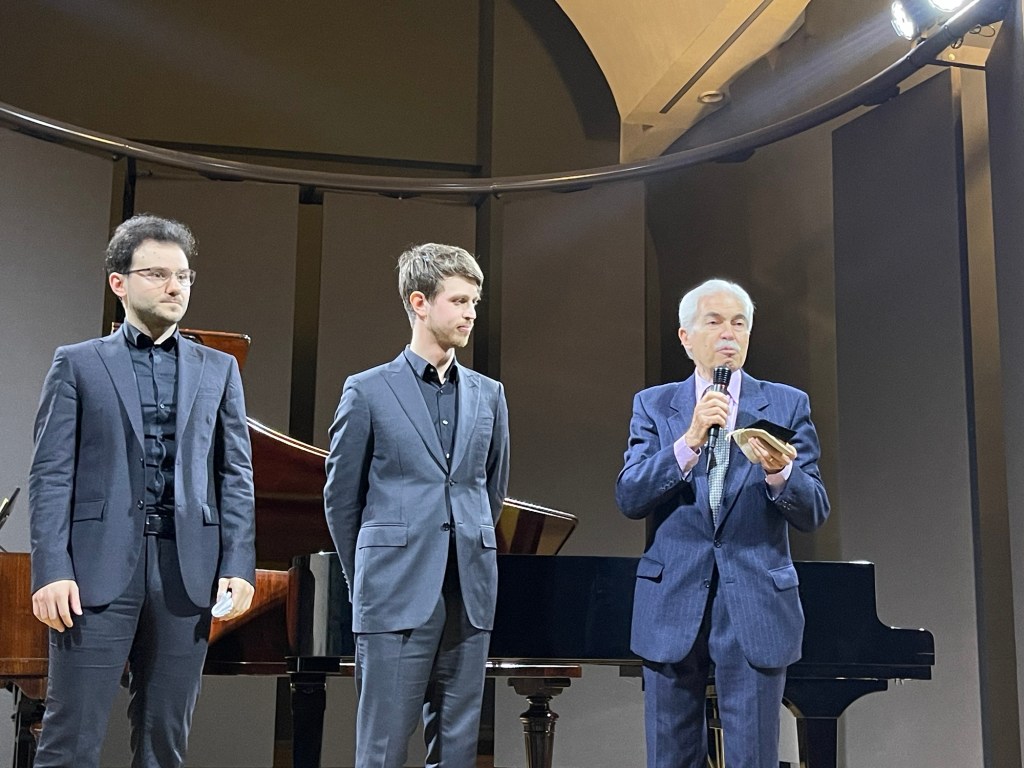
Such a success was greeted by the announcement of an addition to the concert series for this duo who will perform Gershwin’s Rhapsody in Blue in the original two piano version in a concert that will now close the season on the 7th July.
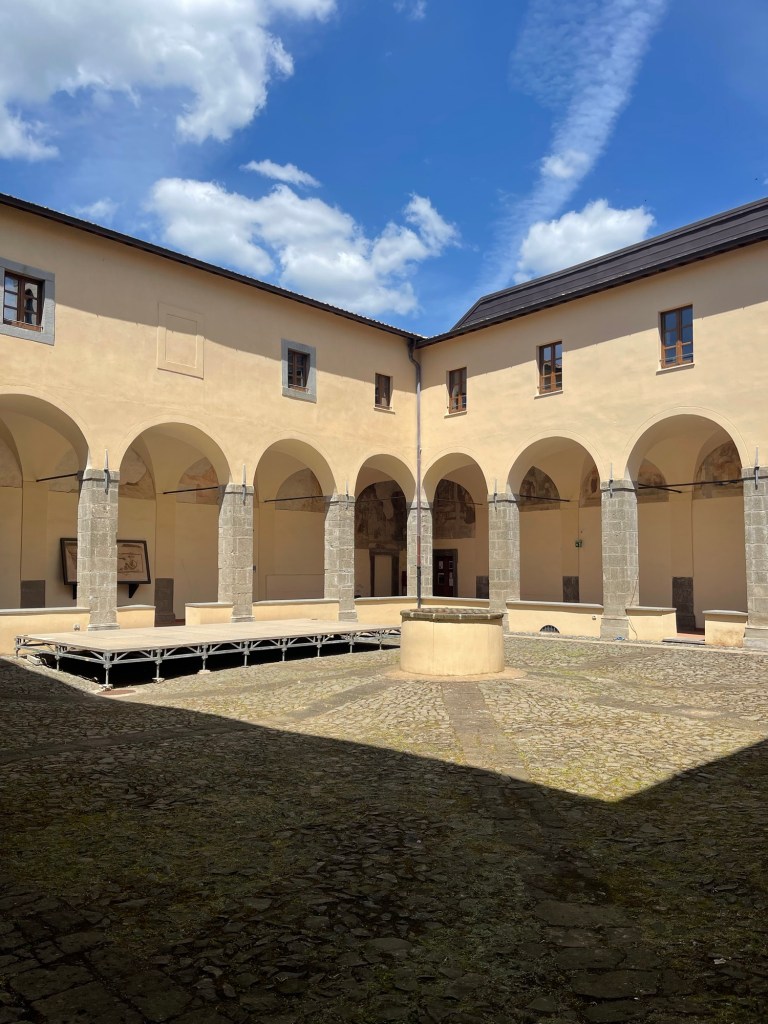
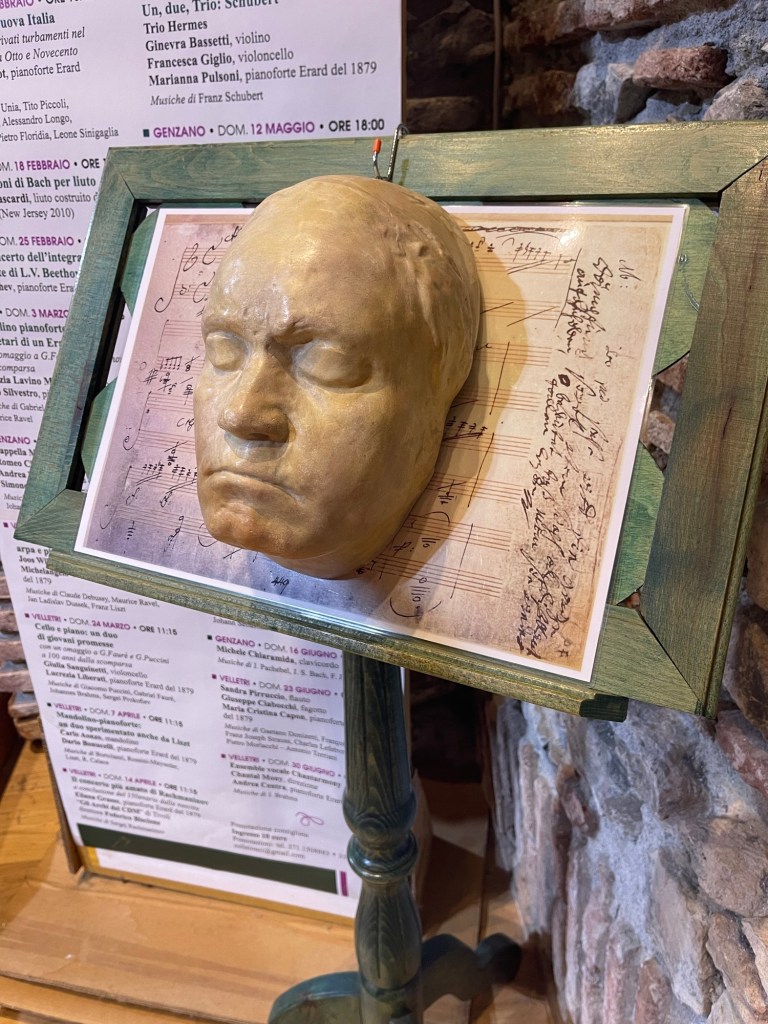
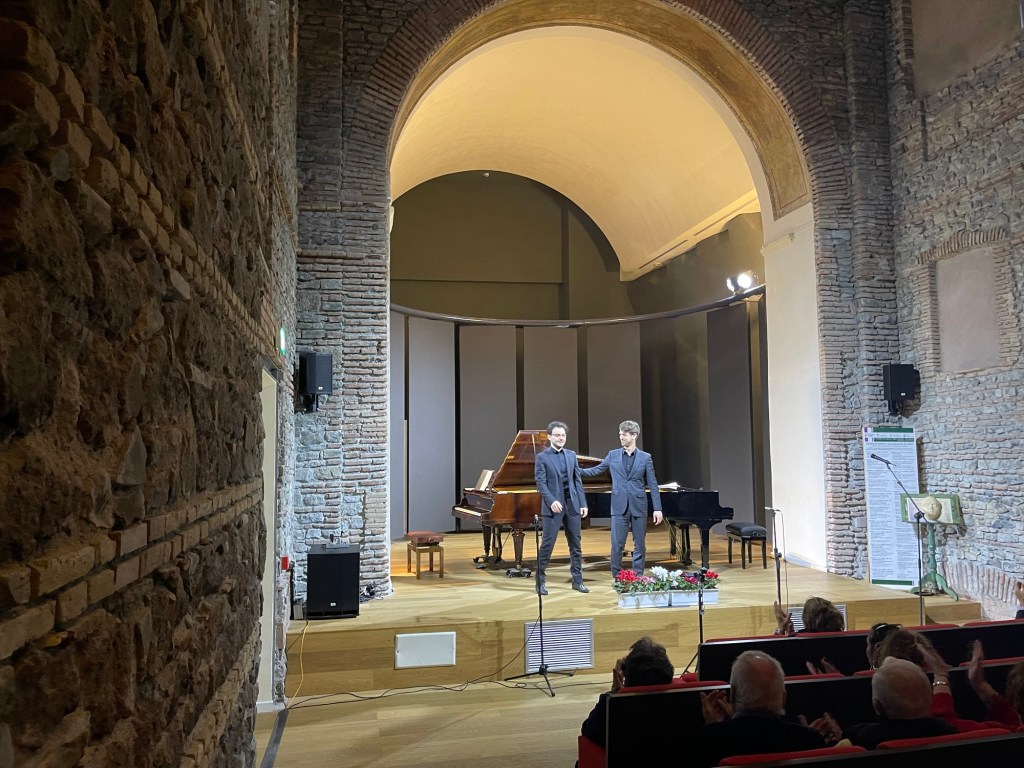


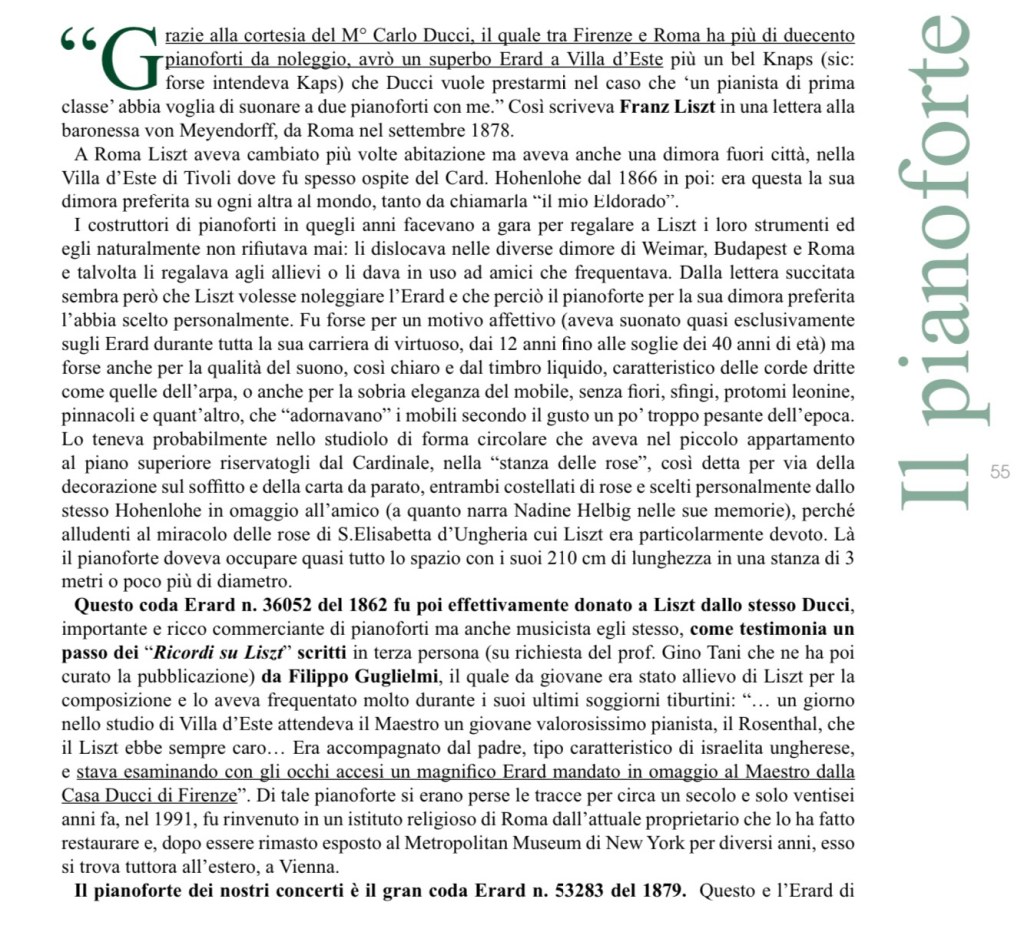


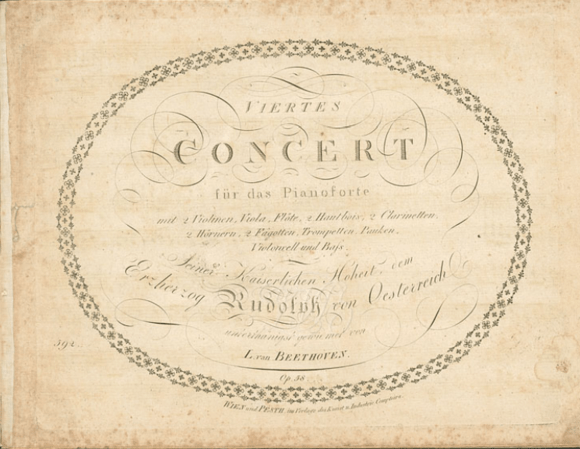
Beethoven’s Fourth Concerto was premiered in March 1807 at a private concert of the home of Prince Franz Joseph von Lobkowitz. The Coriolan Overture and the Fourth Symphony were premiered in that same concert.However, the public premiere was not until the 22 December 1808 at Vienna’s Theatre an der WienTheater with Beethoven again as soloist. The marathon concert saw Beethoven’s last appearance as a soloist with orchestra, as well as the premieres of the Choral Fantasy and the Fifth and Sixth Symphonies .Beethoven dedicated the concerto to his friend, student, and patron, the Archduke Rudolph
A review in the May 1809 edition of the Allegemeine musicalische Zeitung states that ” the concerto is the most admirable, singular, artistic and complex Beethoven concerto ever”.However, after its first performance, the piece was neglected until 1836, when it was revived by Felix Mendelssohn.
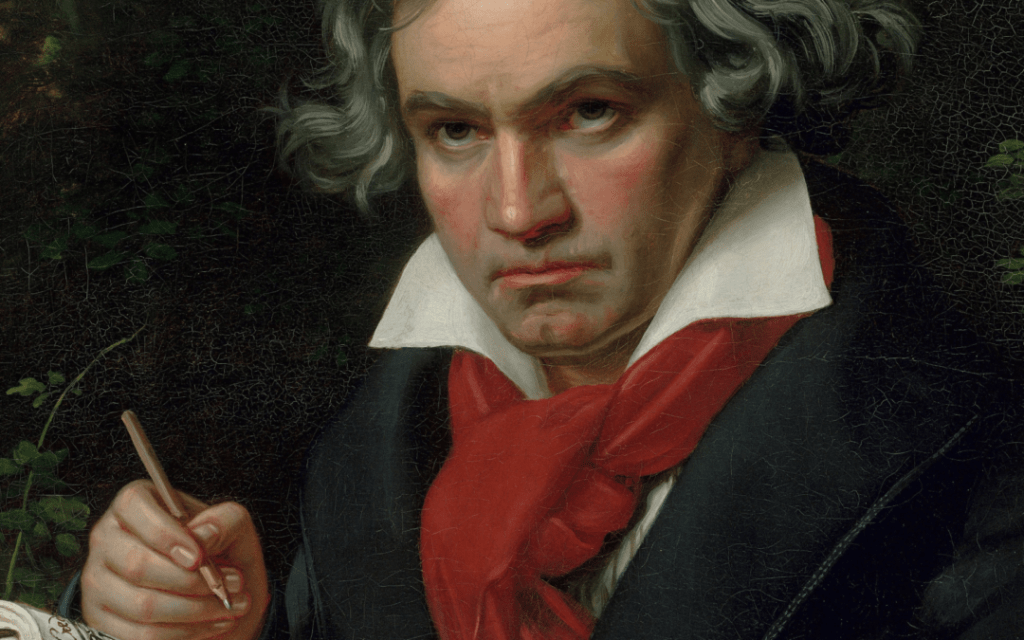
“I have in my heart must come out; that is the reason why I compose.” The opening measures of Beethoven’s Piano Concerto No. 4 are unlike anything contemporary audiences would have previously experienced. Ever the innovator, Beethoven was widely recognized as one of the leading pianists of his generation, and used his technical acumen and knowledge of emerging trends in piano design to construct a concerto of brilliance.
Beethoven’s so-called ‘middle period’, roughly the years 1802-12, is often referred to as his ‘Promethean’ phase. The masterworks of this time, we are often told, are characterised by intense striving, heaven-storming ambition, revolutionary daring in matters of form and expression.
But as Beethoven wrote enigmatically on one of his manuscripts, ‘Sometimes the opposite is also true’; and if any work could be held to demonstrate the truth of that it’s the Fourth Piano Concerto, a work that, composed in 1805-06, enjoyed its premiere at the same huge Theater an der Wien concert on 22 December 1808 – the same event that also saw the first performances of the Fifth and Sixth Symphonies.

with Sergei Rachmaninov April 1, 1873 – March 28, 1943
Rachmaninov composed his Piano Concerto No. 1 in F♯ minor, Op. 1, in 189 at age 17-18 (the first two movements were completed while he was still 17; the third movement and the orchestration were completed shortly after he had turned 18). He dedicated the work to Alexander Siloti . He revised the work thoroughly in 1917.
This was actually Rachmaninov’s second attempt at a piano concerto. In 1889 he had begun but abandoned a concerto in C minor (the same key, incidentally, in which he would later write his Second PianoConcerto ) He wrote Natalya Skalon on 26 March 1891, “I am now composing a piano concerto. Two movements are already written; the last movement is not written, but is composed; I shall probably finish the whole concerto by the summer, and then in the summer orchestrate it”He finished composing and scoring the piece on July 6 and was satisfied with what he had written.The first movement was premiered on 17 March 1892 at the Moscow Conservatory with the composer as soloist and Vasily Safonov conducting.. This may have been the only time the composer played the concerto in its original form, although Siloti, to whom it is dedicated, programmed it to play himself on several occasions.
Composition students were usually advised to base their efforts on a specific model for their first exercises in new forms. In Rachmaninoff’s case this was the Grieg Piano Concerto which was a favourite work of his and one with which he had been familiar from Siloti practicing it at the Rachmaninoff household during the spring and summer of 1890 for future concerts.Rachmaninoff adapted the entire musical structure of the outer movements to the Grieg concerto, literally building his music into it. With all his other concertos, Rachmaninoff would prove more enterprising.
Revision and current structure
The public was already familiar with the Second and Third Concertos before Rachmaninov revised the First in 1917. The First is very different from his later works; in exchange for less memorable melodies, this concerto incorporates elements of youthful vivacity and impetuosity.
The differences between the 1890–1891 original and the 1917 revision reveal a tremendous amount about the composer’s development in the intervening years. There is a considerable thinning of texture in the orchestral and piano parts and much material that made the original version diffuse and episodic is removed.
Of all the revisions Rachmaninoff made to various works, this one was perhaps the most successful. Using an acquired knowledge of harmony, orchestration, piano technique and musical form, he transformed the early composition into a concise, spirited work.Nevertheless, he was perturbed that the revised work did not become popular with the public. He said : “I have rewritten my First Concerto; it is really good now. All the youthful freshness is there, and yet it plays itself so much more easily. And nobody pays any attention. When I tell them in America that I will play the First Concerto, they do not protest, but I can see by their faces that they would prefer the Second or Third.”
